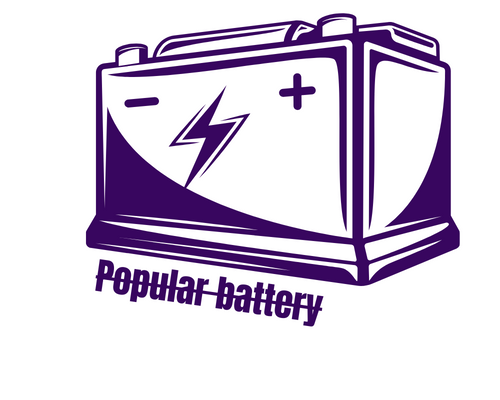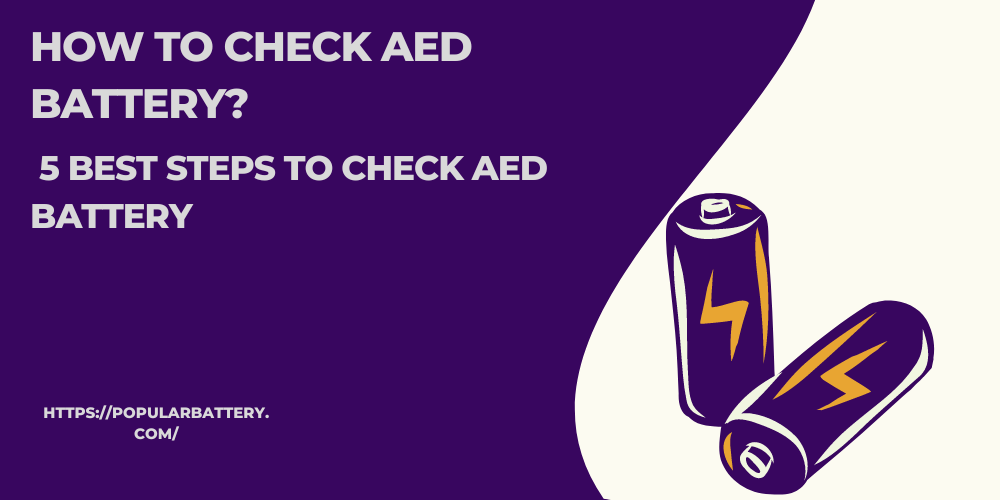How to check AED battery? 5 best steps to check AED battery (2024). Followed by regulations of professional inspection requirements. AED battery checks are an essential practice for any individual using an Automated External Defibrillator (AED). Although it may seem daunting, taking the time to inspect your AED and check its battery is extremely important when ensuring optimal device performance.
AED is a life-saving device, so it’s crucial to make sure that its battery is always ready for use. Visual Inspection: Begin by doing a visual inspection of your AED. Check for any physical damages or abnormalities such as cracks or corrosion on the device and its components.
In this blog post, we’ll outline five best practices for checking your AED batteries, including how to inspect the unit itself, perform self-tests on the equipment, replace batteries as necessary, document tests performed and procedures
How to check AED battery? 5 best steps to check AED battery (2024). How do you know when to replace the AED battery?
It is essential to regularly check and replace the battery of your AED. The average life of battery is typically between 2-5 years, depending on the type and model of the device. However, it is recommended to follow the manufacturer’s guidelines for specific timing for battery replacement to ensure device reliability and effectiveness during emergencies.
How often do you need to check the AED battery?
The frequency of AED batteries checks can vary depending on the device and its usage. However, it is generally recommended to perform a visual inspection of the AED every month and a more thorough check every 6-12 months. It is also crucial to document these checks for regulatory compliance and accountability purposes.
What is the life of an AED battery?

1: AED batteries typically have active battery life of 2-5 years, depending on the device’s type and model.
2: The battery life can also vary based on usage frequency and environmental conditions.
3: Lithium-ion batteries are commonly used in AEDs due to their high energy density and longer shelf life.
4: However, these batteries may still experience degradation over time, leading to reduced battery capacity and effectiveness.
5: Regular checks and timely replacement of AED batteries are crucial for ensuring the device’s proper functioning during emergencies. Therefore, it is important to follow best practices for checking and replacing AED batteries to maintain their lifespan and reliability.
What is the battery indicator on the AED unit?
The battery indicator on an AED unit is a visual or audio signal that alerts the user when the battery needs to be replaced. It can vary depending on the device, but most commonly, it will display a low battery symbol or emit periodic beeps. Some advanced models may also have a numerical percentage display for more accurate monitoring.
How do I know if my AED battery is low?

1: Refer to the AED user manual for specific instructions on checking the battery’s status.
2: Generally, an AED battery indicator will display a low battery symbol or emit periodic beeps when it needs to be AED battery replacement.
3: Some advanced models may also have a numerical percentage display for more accurate monitoring.
4: If there is no visible indicator, you can turn on the device and check the battery status on its screen or display panel.
5: If the AED has been used, it is best to replace the battery immediately, even if there are no visible indications of a low battery. Monitor your AED’s battery regularly to ensure it is always ready for use during emergencies. AED batteries typically have a capacity of battery 2-5 years, depending on the device and usage. It is important to follow the manufacturer’s recommendations for replacement batteries intervals.
conclusion
Maintaining a properly functioning AED is crucial for saving lives during cardiac emergencies. This includes regularly checking and replacing the battery as needed to ensure the device is always ready for use. By following best practices and monitoring your AED’s battery, you can help proper maintenance its lifespan and reliability, increasing the chances of successful outcomes in emergencies.
faqs
Qno1: How do you know if an AED is working?
Ans: You can refer to the AED user manual for specific instructions on checking its status, including battery levels and any error messages. It is also recommended to perform regular maintenance checks and self-tests as instructed by the manufacturer.
Qno2: Can you replace an AED battery?
Ans: Yes, AED batteries are replaceable and should be replaced according to the manufacturer’s recommended guidelines.
Qno3: How do you know if an AED is working?
Ans: It is important to regularly check the battery status indicator of your AED, either by looking for visible indicators or using the device’s screen or display panel. Additionally, following the manufacturer’s recommended replacement intervals and performing regular maintenance checks can help ensure your AED is always ready for use during emergencies. So, it is advised to implement a monitoring system that tracks the battery life of your AED and alerts you when a replacement is needed.
Qno4: How many batteries are in an AED?
Ans: The number of batteries in an AED may vary depending on the make and model. Some devices may have a single battery while others may use multiple batteries. It is important to refer to the user manual for specific information on your AED’s battery configuration and replacement instructions.
Qno5: What is the voltage in an AED?
Ans: The voltage in an AED can vary, but most devices battery power level a range between 300-400 volts. This high voltage is necessary to deliver the shock required to restore a normal heart rhythm during a cardiac emergency. However, AEDs are designed and tested to ensure safety for both rescuers and victims, with built-in features that limit the amount of energy delivered to the patient.

